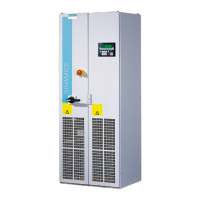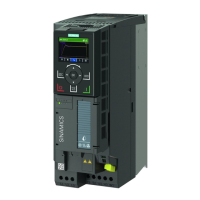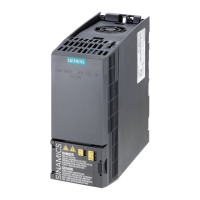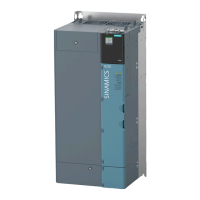Functions
8.6 Motor control
SINAMICS G110M Operating Instructions
Operating Instructions, 04/2015, FW V4.7.3, A5E31298649B AD
195
Calculating the moment of inertia
For larger changes, the inverter initially ca
l-
culates the accelerating torque M
B
as differ-
between the motor torque M
M
, load
M
L
and frictional torque M
R
:
B
= M
M
- M
L
- M
R
The moment of inertia J of the motor and
load is then obtained from the accelerating
torque M
B
– and the angular acceleration α
α = rate of change of speed):
= M
B
/ α
If all of the following conditions are met, the inverter calculates the moment of inertia:
① The rated accelerating torque M
B
must satisfy the following two conditions:
– The sign of M
B
is the same as the direction of the actual acceleration
– M
B
> p1560 × rated motor torque (r0333)
② speed > p1755
The inverter has calculated the load torque in at least one direction of rotation.
Acceleration setpoint > 8 1/s
2
(≙ speed change 480 rpm per s)
③ The inverter calculates the load torque again after acceleration.
Moment of inertia precontrol
In applications where the motor predominantly operates with a constant speed, the inverter
can only infrequently calculate the moment of inertia using the function described above.
Moment of inertia precontrol is available for situations such as these. The moment of inertia
precontrol assumes that there is an approximately linear relationship between the moment of
inertia and the load torque.

